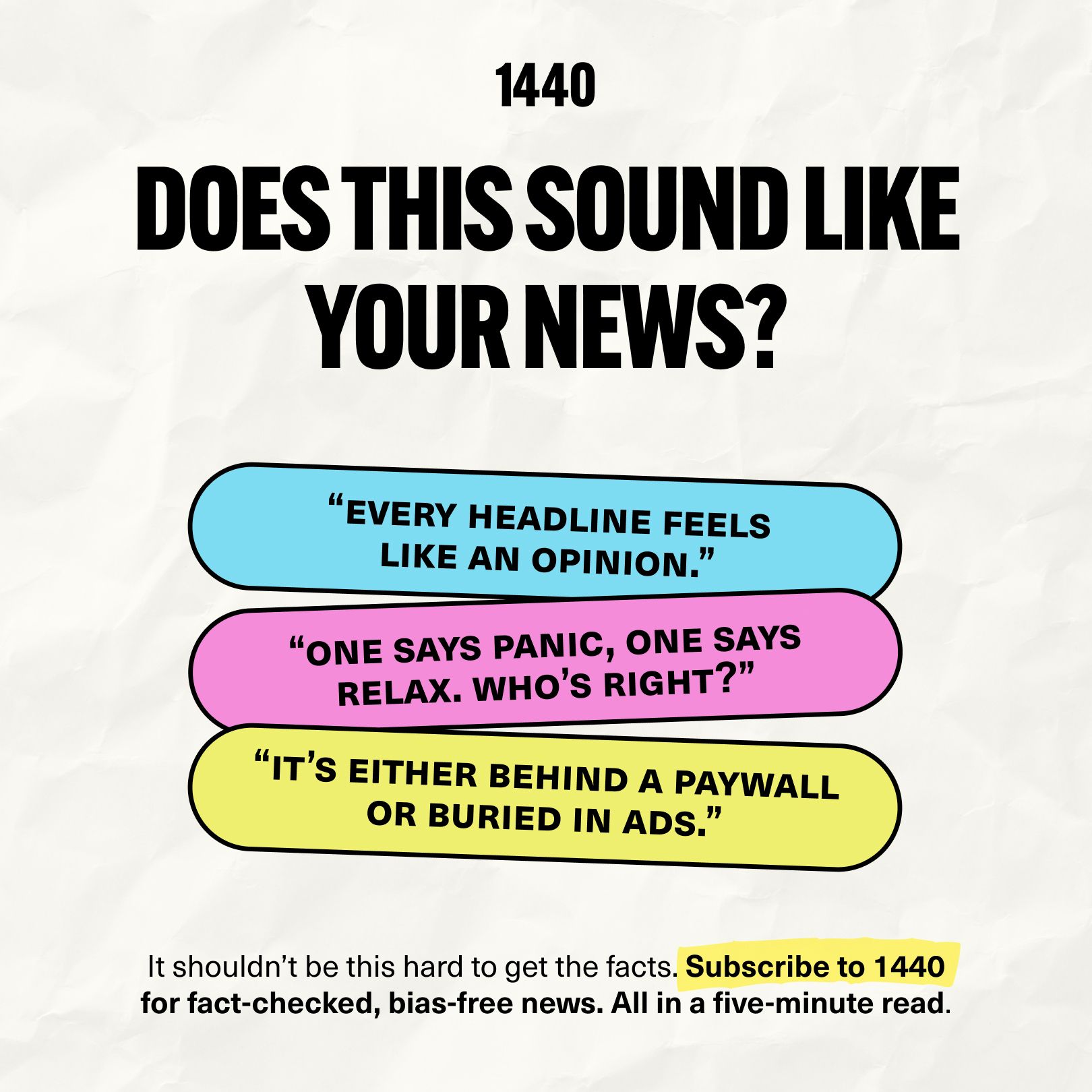- Learn Leadership
- Posts
- Values-Driven Decisions
Values-Driven Decisions
Aligning Strategy with Principles
Decisions anchored in core values stand the test of time. When strategy and principles align, leaders guide organizations with conviction, even amid pressure to cut corners. Values-driven decisions build credibility, foster loyalty, and sharpen focus on what truly matters.
In this edition of Learn Leadership, you will explore:
What value-driven decision-making entails
How Johnson & Johnson’s Tylenol response defined trust
Five steps to embed values into every choice
Common pitfalls that compromise principles
A weekly challenge to practice principled leadership
In partnership with 1440 Media
Looking for unbiased, fact-based news? Join 1440 today.
Join over 4 million Americans who start their day with 1440 – your daily digest for unbiased, fact-centric news. From politics to sports, we cover it all by analyzing over 100 sources. Our concise, 5-minute read lands in your inbox each morning at no cost. Experience news without the noise; let 1440 help you make up your own mind. Sign up now and invite your friends and family to be part of the informed.
The Leadership Lesson Explained
Values-driven decisions begin with a clear set of guiding principles that transcend profit and expediency. These principles act as a compass when trade-offs arise, ensuring choices reinforce the organization’s integrity and long-term vision.
In practice, values influence which initiatives to pursue, which partnerships to form, and how to respond when errors occur. They offer clarity under ambiguity, reduce decision fatigue, and signal to stakeholders what the organization stands for.
When values guide strategy:
Teams move with shared purpose and aligned priorities
Leaders win trust by demonstrating consistency
Organizations navigate crises with resilience
Absent values, strategy risks becoming opportunistic, confusing employees, and eroding stakeholder confidence.
Case Study: Johnson & Johnson’s Tylenol Crisis
In 1982, seven people in Chicago died after taking cyanide-laced Tylenol capsules. Faced with fear and uncertainty, Johnson & Johnson’s credo called for putting customer safety first. Rather than wait for legal advice or guard profits, the company immediately recalled 31 million bottles nationwide at a cost of over $100 million.
Key actions:
Company spokespeople communicated honestly and frequently with the public and media
J&J offered replacement products and refunds without question
Leadership collaborated with regulators to develop tamper-evident packaging
Outcome: The recall restored public trust, and within a year, Tylenol regained market leadership. More importantly, J&J’s actions established a gold standard for crisis response and demonstrated that values can guide both ethical and profitable outcomes.
Takeaway: When leaders act decisively in line with principles, they protect brand integrity and deepen stakeholder loyalty.
Five Steps to Embed Values in Decisions
Turning values into action requires a deliberate process and discipline. Use these five steps to ensure your principles inform every strategic choice.
1. Clarify Core Principles
Begin with a concise, memorable statement of organizational values. Ensure every team member understands and can articulate them.
Try this: Host a values workshop where small groups translate abstract values into everyday behaviors.
Why it matters: Shared language bridges theory and practice, making values tangible.
2. Share Decision Frameworks
Develop simple tools—questions or checklists—that link each strategic choice to core values. Use them in planning and review sessions.
Try this: Introduce a “Values Filter” with prompts like: “Does this choice honor our commitment to quality?” or “How does this action serve our stakeholders?”
Why it matters: Structured reflection embeds principles into routine workflows.
3. Model Behavior at the Top
Leaders must demonstrate values-driven decisions publicly. Their actions set the tone for the organization.
Try this: Share case examples during town halls where senior leaders explain how values shaped a recent decision.
Why it matters: Visible alignment builds credibility and motivates others to follow suit.
4. Align Incentives and Rewards
Ensure performance measures and rewards reinforce principled choices. Recognize teams that uphold values, not just those that hit targets.
Try this: Introduce an annual “Values Champion” award for employees whose decisions best reflect organizational principles.
Why it matters: Incentives drive behavior. When you reward integrity, you sustain a values-driven culture.
5. Evaluate and Learn from Outcomes
Regularly review both successful and problematic decisions through the lens of your values. Capture lessons and refine your framework.
Try this: In quarterly strategy reviews, include a segment analyzing recent choices: what aligned with values, what could improve, and where trade-offs occurred.
Why it matters: Continuous learning ensures values remain relevant and actionable over time.
Common Pitfalls and How to Avoid Them
Even with clear values, leaders can falter under pressure. Watch for these five pitfalls and guard against them.
1. Treating Values as Decoration
Posting values on walls without integrating them into decisions renders them meaningless.
Fix: Embed values into job descriptions, performance reviews, and project approvals to keep them front and center.
2. Ignoring Contextual Trade-offs
Rigidly applying values without weighing context can lead to unintended harm.
Fix: Encourage teams to discuss value tensions openly and document rationale when exceptions occur.
3. Failing to Communicate Rationale
When leaders act on values but do not explain why, teams may misinterpret or resist.
Fix: Always accompany values-based decisions with clear explanations of the principles at play.
4. Rewarding Results Over Integrity
Celebrating outcomes without acknowledging the methods can incentivize cutting corners.
Fix: Balance success metrics with integrity indicators—such as stakeholder feedback and ethical compliance.
5. Skipping Retrospectives
Assuming values-driven actions went as planned without review prevents improvement.
Fix: Conduct after-action reviews focusing on how values influenced outcomes and what can be refined.
Weekly Challenge
Practice one values-driven decision this week:
Identify a choice you face—big or small.
Apply your Values Filter checklist before deciding.
Document how you applied each value in your reasoning.
Share your process and decision with a peer for feedback.
Reflect on whether this approach led to a different outcome.
Values are more than ideals. They are the guardrails that guide every step. Lead with them, and you lead with lasting impact.

